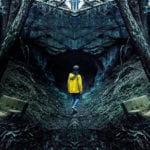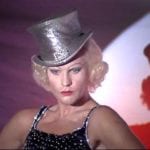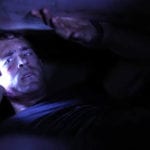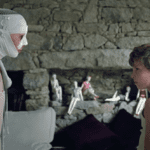 Weird Stuff
Weird Stuff  Weird Stuff
Weird Stuff  Our World
Our World 10 Ways Your Christmas Tree Is More Lit Than You Think
 Movies and TV
Movies and TV The 10 Coolest Stars to Set Sail on The Love Boat
 History
History 10 Things You Didn’t Know About the American National Anthem
 Technology
Technology Top 10 Everyday Tech Buzzwords That Hide a Darker Past
 Humans
Humans 10 Everyday Human Behaviors That Are Actually Survival Instincts
 Animals
Animals 10 Animals That Humiliated and Harmed Historical Leaders
 History
History 10 Most Influential Protests in Modern History
 Creepy
Creepy 10 More Representations of Death from Myth, Legend, and Folktale
 Technology
Technology 10 Scientific Breakthroughs of 2025 That’ll Change Everything
 Weird Stuff
Weird Stuff Ten Bizarre Facts About The Doge Meme
 Our World
Our World 10 Ways Your Christmas Tree Is More Lit Than You Think
 Movies and TV
Movies and TV The 10 Coolest Stars to Set Sail on The Love Boat
Who's Behind Listverse?

Jamie Frater
Head Editor
Jamie founded Listverse due to an insatiable desire to share fascinating, obscure, and bizarre facts. He has been a guest speaker on numerous national radio and television stations and is a five time published author.
More About Us History
History 10 Things You Didn’t Know About the American National Anthem
 Technology
Technology Top 10 Everyday Tech Buzzwords That Hide a Darker Past
 Humans
Humans 10 Everyday Human Behaviors That Are Actually Survival Instincts
 Animals
Animals 10 Animals That Humiliated and Harmed Historical Leaders
 History
History 10 Most Influential Protests in Modern History
 Creepy
Creepy 10 More Representations of Death from Myth, Legend, and Folktale
 Technology
Technology 10 Scientific Breakthroughs of 2025 That’ll Change Everything
Top 10 Experimental Films to Watch Right Now
The experimental film genre goes back as far as film history takes us. One of the first experimental films was done by Thomas Edison’s assistant, William Dickson, on the kinetoscope called “Monkeyshines No. 1” around 1889 or 1890. In fact, you could say all early silent cinema was experimental as the filmmakers were literally figuring out how to use the camera and editing to tell a story or use it to express or explore dreamlike visual art.
Out of experimental film came many new offshoots of the genre. One of the more prominent ones was avant-garde, which usually has no conventional point to them and focuses on exploring innovative and creative issues such as time, fantasy, dreams, or perception. The German silent film classic, The Cabinet of Dr. Caligari is one of the more famous early examples of dreams or perception.
Today, the genre has given birth to other offshoots, such as cinematic poetry and the cinematic diary, akin to the works of the late great Jonas Mekas. Even the experimental documentary has been around longer than viewers realize; the city symphony films are an early example or, more recently, Guy Maddin’s “My Winnipeg.”
Pulling from experimental film history and more recent works, here are ten experimental films you should watch.
Related: 10 Sci-Fi Short Films That Will Give You The Creeps
10 “Un Chien Andileu” (1929)
This is many film students’ introduction to experimental film. The French title translates to “An Andalusian Dog” and has nothing to do with the film itself. Crafted by Luis Bunuel and Salvador Dali, this silent surrealist journey uses dream logic to construct a non-narrative that is very Freudian in its design and meant to be shocking.
The film’s concept is actually a mix of two dreams that both the creators had—Dali’s hand covered in ants and Bunuel cutting an eye with a blade. When watched, the film invokes unease in that you are trying to make sense of a dream and can’t. Our brains try to find something relatable in the film and sometimes can’t. When we do feel some sort of connection, it’s a completely different interpretation, which is what the filmmakers wanted. They wanted to leave you thinking and trying to make sense of it. They know you can’t exactly be just like a piece of surreal art; it’s always up for debate without any true solution.
This is what makes “Un Chien Andileu” a must see for anyone interested in experimental film. [1]
9 “The Life and Death of 9413: A Hollywood Extra” (1928)
This film is a silent-film hidden gem. The film was made for $97 in 1928, and in American avant-garde cinema is considered one of the early pillars in the genre.
It centers on an actor who makes his way to Hollywood hoping to hit the big time, only to be dehumanized by studios, landing the role of a simple extra. They even write 9413 on his head, making him just a number in their system.
What makes the film so unique is how they leaned into their budget with a lack of resources and visually gave Hollywood this surreal emptiness, something that people from the outside had not seen before depicted. The use of German expressionist lighting, superimposition, twisting shapes, and disorienting angles really makes the film memorable as it visually shows the actor’s descent into madness and death caused by the demeaning dark side of Hollywood.[2]
8 “Manhatta” (1921)
This film is considered to be the true first American avant-garde film by many. “Manhatta” was a collaboration between painter Charles Sheeler and photographer Paul Strand. The non-narrative documentary is a visual poem that is simply exploring two things. First, it provided an abstract view of the city through carefully set up visual compositions. The second one is actually how the camera is used. This is done by experimenting with photography, film, minimalistic camera movement, and incidental motion in each film frame by exploring their relationships with each other.
Being a silent-era film, it does use intertitles, but unlike most films, it uses a Walt Whitman poem instead of dialogue or scene explanations.[3]
7 “From Afar” (2020)
An absolutely beautiful short film that will only take two minutes of your time. This is part of the cinematic poetry genre I mentioned earlier. Its simplicity and use of editing make it an experience that lingers.
Much like “The Life and Death of 9413: A Hollywood Extra,” filmmaker and poet Andrei Purcarea uses what he has to his advantage to visually push the poem along. Many of the shots don’t have anything to do with what’s being said exactly when you watch, but at the same time, you get this feeling of understanding.
However, unlike “The Life and Death of 9413,” this film doesn’t have fast cuts or superimpositions. In fact, the editing and pacing are more akin to “Manhatta,” visually telling us a story to go along with the poem. Is this whole film really about a ship, or is it more about something in life that represents a ship we missed and can’t see anymore? What did the characters miss? Who did they miss? The use of the lone red chair and the mirror on this beach looking out at sea…very existential. Very experimental. Very moving.[4]
6 “Catharsis” (2018)
This short film beautifully uses the experimental style to invoke emotion as we journey into the subject’s mind. It is a surreal reminder that we may not know what someone is going through, even if they seem calm on the outside. This film by Naleeka Dennis follows Marsha as she struggles to cope with the loss of her beloved by attempting to live in a fantasy world. But she must eventually deal with her grief.
The ending shot especially hammers this home as the world seems very eerie around her now. It was the same before we dove into her mind, but knowing what she is dealing with really changes your perspective.[5]
5 “Until There Was Nothing” (2020)
This wonderful short was released last year and really takes on a fantastic premise—standing on Earth in its final moments as it enters a black hole. Created by Paul Trillo, the images at first seem beautiful but suddenly change as they stretch toward the sky. While it may seem like a bleak film at first, Trillo notes, “Someday this will pass and there will be nothing left… That’s not something to fear ‘because we come from nothing’ as Alan Watts puts it… and from nothing comes something new.”
The surreal visuals caused by intense gravitational forces with the use of philosopher Alan Watt’s talking about the meaning of nothingness really gives the film a much deeper feel.[6]
4 “Stellar” (1993)
Stan Brakhage is the perfect mix of artist and filmmaker. With 380 films to his credit, it’s hard to choose which one to even pick. Brakhage’s work is unique and can be best described as live paintings. Meaning that he would paint or scratch or do something on each frame and then project it. The results were really mind-blowing. “Stellar” stands out to me as it feels like something that could’ve been used in early sci-fi films like 2001: A Space Odyssey or TV shows like the original Star Trek.
The last few frames are particularly surprising as a strange picture appears amongst the starry images. Like all art, “Stellar” is whatever you perceive it to be. For me, its a journey through space and the birth of the universes, with the first creature in the universe coming into being at the end. See how you interpret it.[7]
3 “Night Mayor” (2009)
A fantastic gem of a film. Guy Maddin’s visuals harken back to early silent film while giving a touch of modernity by filming on newer formats that even include VHS. Yet it’s his use of lighting, old-school tricks, and editing that really helps give this film its surreal aspect. Like we are watching a dream.
“Night Mayor” is a visual journey into the mind of a Bosnian immigrant, Nihad Ademi, who thinks he has discovered a way to harness the power of the Aurora Borealis in order to broadcast imagery from coast to coast.[8]
An absolute must-see short film!
2 “Light Is Calling” (2004)
Bill Morrison is an amazing filmmaker. He is unique in that he helps bring forgotten or close to decaying films back to life as experimental cinema. I highly suggest his film Decasia (2002) and Dawson City: Frozen Time (2016).
“Light Is Calling” is a short he did in 2004 in which he takes decaying nitrate film from 1926 titled “The Bells” and gives it new life.
After having the film optically reprinted, it is edited into a new format to go along with a 7-minute composition by Michael Gordon. IMDb describes the film best as a “meditation on the fleeting nature of life and love, as seen through the roiling emulsion of film.”[9]
A magnificent decaying dream.
1 “Meshes of the Afternoon” (1943)
Maya Deren was a jack of all trades. She was a dancer, choreographer, film theorist, poet, photographer, avant-garde promoter, and experimental filmmaker.
Deren believed that film should be an experience. “Meshes of the Afternoon” is definitely that—and a very important experimental piece. The film is considered one of the most influential experimental films in the history of American cinema.
The film is essentially a dream. Using dreamlike logic to create a unique experience for the viewer, it follows a female character who falls asleep after returning home. Her vivid dreams draw us in as her darker inner desires play out before our eyes. It’s actually hard to distinguish reality from the dream, but that is the point. She involves you mentally.[10]
A very influential piece on many filmmakers, including the works of David Lynch.








